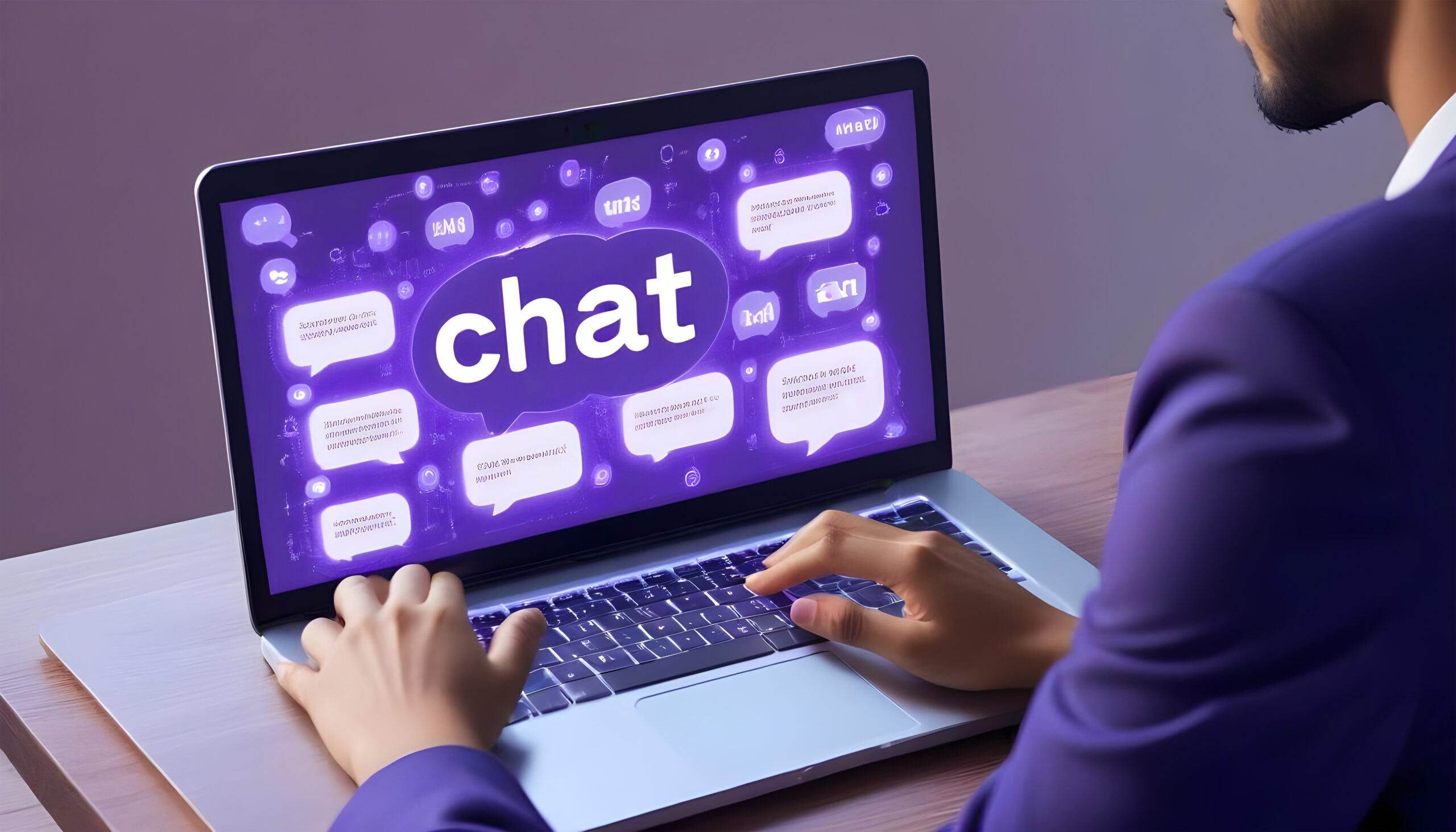How to Implement ChatGPT Prompt Engineering in Your Daily Tasks
Introduction: The Game-Changing Potential of ChatGPT Prompt Engineering
Picture a world where your daily tasks are seamlessly enhanced by artificial intelligence, guided by your expertly crafted prompts.
This is the reality that ChatGPT prompt engineering brings to your fingertips.
As we delve into the intricacies of this powerful technique, you’ll discover how it can revolutionize your productivity, creativity, and problem-solving abilities.
ChatGPT prompt engineering is not just a skill; it’s a gateway to unlocking the full potential of AI assistance in your everyday life.
From writing reports to brainstorming ideas, from coding to content creation, the applications are virtually limitless.
In this comprehensive guide, we’ll explore how you can harness the power of ChatGPT prompt engineering to transform your daily routine.
We’ll break down complex concepts into digestible chunks, provide practical examples, and offer step-by-step instructions to help you master this game-changing skill.
By the end of this article, you’ll be equipped with the knowledge and tools to implement ChatGPT prompt engineering across various aspects of your personal and professional life.
We strongly recommend that you check out our guide on how to take advantage of AI in today’s passive income economy.
Table of Contents
Understanding ChatGPT Prompt Engineering: The Foundation of Effective AI Interaction
At its core, ChatGPT prompt engineering is the art and science of crafting precise and effective instructions for AI language models.
It’s about learning to communicate with AI in a way that yields the most accurate, relevant, and useful responses.
This skill involves understanding the nuances of natural language processing and the specific capabilities of ChatGPT.
By mastering ChatGPT prompt engineering, you’re essentially learning to speak the language of AI, enabling you to extract maximum value from these powerful tools.
The process requires a blend of creativity, critical thinking, and technical understanding.
It’s about knowing how to frame your questions, provide context, and guide the AI towards the desired output.
ChatGPT prompt engineering is not just about getting answers; it’s about getting the right answers efficiently and consistently.
As we progress through this guide, you’ll see how this skill can be applied to a wide range of tasks, from simple queries to complex problem-solving scenarios.
The Building Blocks of Effective ChatGPT Prompt Engineering
To become proficient in ChatGPT prompt engineering, it’s crucial to understand its fundamental components.
First and foremost is clarity – your prompts should be unambiguous and specific.
Next is context – providing relevant background information helps the AI understand the scope and purpose of your query.
Structure plays a vital role too; well-organized prompts lead to more coherent and useful responses.
Another key element is the use of examples, which can guide the AI towards the style or format you’re looking for.
Incorporating constraints or parameters can help narrow down the AI’s focus and prevent irrelevant tangents.
It’s also important to consider the tone and style you want the AI to adopt in its responses.
By mastering these building blocks, you’ll be able to craft prompts that consistently yield high-quality, relevant outputs.
Remember, effective ChatGPT prompt engineering is an iterative process – it often requires refinement and adjustment based on the results you receive.
Implementing ChatGPT Prompt Engineering in Your Writing Tasks
One of the most immediate applications of ChatGPT prompt engineering is in enhancing your writing process.
Whether you’re drafting emails, creating reports, or working on creative projects, AI can be an invaluable assistant.
Start by using ChatGPT prompt engineering to generate outlines for your writing tasks.
For example, you could prompt: “Create a detailed outline for a 1500-word article on sustainable urban planning, including five main sections with three subsections each.”
This approach helps you structure your thoughts and ensures you cover all necessary points.
When facing writer’s block, use ChatGPT prompt engineering to brainstorm ideas.
A prompt like “Generate 10 unique opening sentences for an essay on the impact of social media on mental health” can kickstart your creativity.
For editing and proofreading, craft prompts that ask the AI to review your text for specific elements.
You might say, “Review the following paragraph for grammar errors, suggest improvements in sentence structure, and highlight any unclear phrases.”
ChatGPT prompt engineering can also help you adapt your writing style for different audiences.
Try a prompt like “Rewrite this technical explanation of blockchain technology for a general audience, using simple analogies and avoiding jargon.”
Leveraging ChatGPT Prompt Engineering for Research and Information Gathering
ChatGPT prompt engineering can significantly streamline your research process and help you gather information more efficiently.
Start by using prompts to generate lists of relevant questions about your topic.
For instance, “Create a list of 20 essential questions to ask when researching renewable energy sources.”
This approach ensures you cover all crucial aspects of your subject.
Use ChatGPT prompt engineering to summarize complex information or break down intricate concepts.
A prompt like “Explain the concept of quantum computing in simple terms, using a step-by-step breakdown and everyday analogies” can help you grasp difficult subjects.
When exploring different viewpoints on a topic, craft prompts that encourage balanced perspectives.
Try something like “Present three contrasting viewpoints on the ethics of artificial intelligence, including arguments for and against each position.”
ChatGPT prompt engineering can also help you identify gaps in your research.
Use prompts like “Based on the following summary of my research on climate change, what important aspects or recent developments am I missing?”
Remember to always verify information provided by AI through reliable sources, as ChatGPT’s knowledge cutoff date may not include the most recent data.
Enhancing Problem-Solving with ChatGPT Prompt Engineering
ChatGPT prompt engineering can be a powerful tool for tackling complex problems and making decisions.
Start by clearly defining your problem in a prompt, providing all relevant details and constraints.
For example, “I need to reduce my company’s operating costs by 15% without laying off staff. Our main expenses are [list expenses]. Suggest five innovative strategies to achieve this goal.”
Use ChatGPT prompt engineering to break down complex problems into smaller, manageable steps.
A prompt like “Outline a step-by-step process for implementing a company-wide sustainability initiative, considering budget constraints, employee engagement, and measurable outcomes” can help you approach big challenges systematically.
When facing ethical dilemmas, use prompts that encourage consideration of multiple perspectives and potential consequences.
Try something like “Analyze the ethical implications of using AI in hiring decisions, considering fairness, privacy, and potential biases. Provide arguments for and against this practice.”
ChatGPT prompt engineering can also help you generate creative solutions to problems.
Use prompts like “Brainstorm ten unconventional approaches to improving employee satisfaction in a remote work environment, considering factors like work-life balance, team bonding, and career growth.”
Remember to use ChatGPT as a tool to augment your own critical thinking, not replace it.
Always evaluate AI-generated solutions in the context of your specific situation and use your judgment to make final decisions.
Optimizing Your Time Management with ChatGPT Prompt Engineering
Effective time management is crucial in today’s fast-paced world, and ChatGPT prompt engineering can be a game-changer in this area.
Start by using prompts to help you prioritize your tasks and create structured schedules.
For instance, “Given the following list of tasks [insert tasks] and their deadlines, create a prioritized daily schedule for the next week, considering task importance and time constraints.”
Use ChatGPT prompt engineering to break down large projects into manageable chunks.
A prompt like “Develop a detailed project plan for launching a new product, including main phases, sub-tasks, estimated time for each task, and potential bottlenecks” can help you visualize and organize complex undertakings.
When struggling with procrastination, craft prompts that help you identify root causes and suggest solutions.
Try something like “Analyze common reasons for procrastination and provide five practical strategies to overcome each, with examples of how to implement them in daily life.”
ChatGPT prompt engineering can also assist in creating effective to-do lists and setting SMART goals.
Use prompts like “Convert the following vague goals [insert goals] into specific, measurable, achievable, relevant, and time-bound (SMART) objectives, and suggest three actionable steps for each.”
Remember that while AI can provide valuable suggestions, the key to effective time management lies in consistent implementation and personal accountability.
Use ChatGPT prompt engineering as a tool to enhance your productivity, but always tailor the advice to your individual needs and circumstances.
Enhancing Creativity and Ideation through ChatGPT Prompt Engineering
ChatGPT prompt engineering can be a powerful catalyst for creativity and ideation in various fields.
Whether you’re a writer, artist, marketer, or entrepreneur, well-crafted prompts can help you generate fresh ideas and overcome creative blocks.
Start by using prompts that encourage unconventional thinking.
For example, “Generate ten unique product ideas by combining features from a smartphone, a kitchen appliance, and a piece of furniture.”
This type of prompt pushes the AI (and consequently, your own thinking) beyond conventional boundaries.
Use ChatGPT prompt engineering to explore different perspectives on your creative projects.
A prompt like “Describe a day in the life of a city from the perspective of a stray cat, a traffic light, and a discarded newspaper” can help writers develop unique narratives or help marketers create engaging ad campaigns.
When brainstorming for business ideas, craft prompts that consider current trends and future projections.
Try something like “Based on current technological trends, suggest five innovative business ideas that could become mainstream in the next decade, including potential challenges and market opportunities.”
ChatGPT prompt engineering can also help in developing characters for stories or user personas for product design.
Use prompts like “Create a detailed profile of a Gen Z entrepreneur, including their background, motivations, challenges, and daily habits. How would this person interact with a new social media platform?”
Remember that while AI can provide a wealth of ideas, the true creative magic happens when you build upon and refine these suggestions with your own unique insights and experiences.
Use ChatGPT prompt engineering as a springboard for your creativity, not a replacement for it.
Leveraging ChatGPT Prompt Engineering for Learning and Skill Development
ChatGPT prompt engineering can be an invaluable tool in your learning journey, helping you grasp new concepts, practice skills, and expand your knowledge base.
Start by using prompts to create personalized study plans or curricula.
For instance, “Design a 12-week study plan for learning intermediate Spanish, including daily activities, resource recommendations, and milestones to track progress.”
Use ChatGPT prompt engineering to break down complex topics into digestible chunks.
A prompt like “Explain the concept of blockchain technology using a step-by-step approach, starting with basic principles and gradually introducing more advanced ideas. Include analogies to help understand each step.”
When practicing problem-solving skills in fields like mathematics or coding, craft prompts that generate practice problems.
Try something like “Create five calculus problems of increasing difficulty related to optimization, and provide step-by-step solutions for each.”
ChatGPT prompt engineering can also help you explore interdisciplinary connections.
Use prompts like “Explain how concepts from evolutionary biology could be applied to improve machine learning algorithms. Provide specific examples and potential research directions.”
To enhance critical thinking, use prompts that encourage analysis and debate.
For example, “Present arguments for and against the implementation of a universal basic income, considering economic, social, and ethical factors.”
Remember that while ChatGPT can provide explanations and examples, true learning comes from active engagement with the material.
Use the information generated through ChatGPT prompt engineering as a starting point for further research, practice, and application in real-world contexts.
Implementing ChatGPT Prompt Engineering in Professional Communication
ChatGPT prompt engineering can significantly enhance your professional communication skills, helping you craft more effective emails, reports, and presentations.
Start by using prompts to generate outlines for important communications.
For example, “Create a detailed outline for a quarterly report presentation, including key financial metrics, project updates, and future strategies.”
Use ChatGPT prompt engineering to adapt your communication style for different audiences or cultures.
A prompt like “Rewrite the following product description for a tech-savvy millennial audience, emphasizing sustainability and innovative features” can help you tailor your message effectively.
When preparing for difficult conversations or negotiations, craft prompts that help you anticipate potential scenarios.
Try something like “Generate five possible objections a client might have to our new pricing structure, and suggest tactful responses to each.”
ChatGPT prompt engineering can also assist in creating more engaging and persuasive content.
Use prompts like “Provide five compelling opening statements for a pitch to potential investors, highlighting our unique value proposition and market potential.”
For improving email communication, use prompts to generate templates for common situations.
For instance, “Create three email templates for following up with clients after a sales call, varying in tone from formal to casual.”
Remember that while ChatGPT can provide valuable suggestions, it’s crucial to infuse your own voice and maintain authenticity in your communications.
Use ChatGPT prompt engineering as a tool to enhance your natural communication style, not replace it entirely.
Conclusion: Embracing the Future with ChatGPT Prompt Engineering
As we’ve explored throughout this article, ChatGPT prompt engineering is a powerful skill that can revolutionize the way you approach your daily tasks.
From enhancing your writing and problem-solving abilities to boosting your creativity and learning capacity, the applications are vast and varied.
By implementing ChatGPT prompt engineering in your daily routine, you’re not just using a tool; you’re adopting a new way of thinking and interacting with artificial intelligence.
This skill allows you to harness the full potential of AI, making it work for you in ways that are tailored to your specific needs and goals.
As AI technology continues to evolve, those who master ChatGPT prompt engineering will find themselves at a significant advantage.
They’ll be able to adapt more quickly, solve problems more efficiently, and innovate more effectively.
However, it’s important to remember that ChatGPT prompt engineering is not about replacing human thinking, but about augmenting it.
The most powerful results come from combining AI capabilities with human creativity, critical thinking, and emotional intelligence.
As you continue to practice and refine your ChatGPT prompt engineering skills, you’ll likely discover new and innovative ways to apply this technology in your personal and professional life.
The key is to remain curious, experimental, and open to the possibilities that this powerful tool presents.
In conclusion, ChatGPT prompt engineering is more than just a technical skill – it’s a gateway to a new era of human-AI collaboration.
By mastering this art, you’re not just preparing for the future; you’re actively shaping it.
So embrace the challenge, start crafting those prompts, and watch as your daily tasks transform into opportunities for innovation and growth.
The future of AI-assisted productivity is here, and with ChatGPT prompt engineering, you’re well-equipped to make the most of it.
Frequently Asked Questions about ChatGPT Prompt Engineering
Does ChatGPT use prompt engineering?
ChatGPT itself doesn’t use prompt engineering.
Prompt engineering is a technique used by humans to interact more effectively with ChatGPT and other AI language models.
It involves crafting specific, well-structured inputs (prompts) to get the most accurate and useful responses from the AI.
While ChatGPT is designed to understand and respond to a wide range of prompts, it’s the user who applies prompt engineering techniques to optimize these interactions.
The more skilled you become at prompt engineering, the better results you can achieve when using ChatGPT.
This skill allows you to guide the AI more precisely towards the type of output you’re seeking.
How to engineer ChatGPT?
Engineering ChatGPT refers to the process of crafting effective prompts to get the best possible responses.
Here are some key strategies:
- Be specific and clear in your instructions to ChatGPT.
- Provide relevant context to help the AI understand the scope of your query.
- Use examples to guide the AI towards the style or format you’re looking for.
- Break complex tasks into smaller, more manageable steps.
- Experiment with different phrasings and structures to see what works best.
- Use constraints or parameters to narrow down the AI’s focus.
- Iterate and refine your prompts based on the responses you receive.
Remember, effective prompt engineering is often an iterative process that improves with practice and experimentation.
How much is prompt engineering for ChatGPT?
Prompt engineering for ChatGPT itself is free – it’s a skill you can develop on your own through practice and learning.
There’s no direct cost associated with crafting prompts for ChatGPT.
However, if you’re asking about professional prompt engineering services, costs can vary widely depending on the complexity of the task and the experience of the engineer.
Some businesses or individuals might charge for consultations or workshops on effective prompt engineering techniques.
Prices for such services could range from a few hundred to several thousand dollars, depending on the scope and duration.
It’s important to note that many resources for learning prompt engineering are available for free online, including tutorials, articles, and community forums.
How can I be a prompt engineer?
Becoming a prompt engineer involves developing a specific set of skills and knowledge.
Here’s a step-by-step guide to get you started:
- Familiarize yourself with AI language models like ChatGPT and their capabilities.
- Study the principles of natural language processing and how AI interprets human language.
- Practice crafting various types of prompts and analyze the responses you receive.
- Learn about different prompt structures and techniques, such as few-shot learning and chain-of-thought prompting.
- Develop a deep understanding of the specific domain or industry you want to focus on.
- Experiment with prompt engineering across various applications, from writing to problem-solving to creative tasks.
- Stay updated on the latest developments in AI and language model technologies.
- Consider taking online courses or workshops specifically focused on prompt engineering.
- Join communities or forums where prompt engineers share tips and discuss best practices.
- Build a portfolio of successful prompt engineering projects to showcase your skills.
Remember, becoming proficient in prompt engineering takes time and practice.
Stay curious, keep experimenting, and don’t be afraid to think creatively about how to communicate with AI models.

We strongly recommend that you check out our guide on how to take advantage of AI in today’s passive income economy.




